UX vs. UI: The Difference Between UX and UI Design(ers)

In this article

UX and UI refer to two different fields, two different educational paths, and two different jobs with varying responsibilities and salaries—and yet, the two terms are often used interchangeably. But they do have one thing in common: they’re both great options if you’re thinking about a career change.
In a national survey of UX designers, 81 percent rated their career satisfaction at five or higher on a scale of one to seven, and the U.S. Bureau of Labor Statistics projects a faster-than-average growth rate of 13% for UI design jobs. However, you can’t begin your learning journey for either profession until you understand the differences between them.
Below, we have compiled a series of direct comparisons between the two fields, covering their definitions, job descriptions, required skills, salaries, and more. By the end of this post, you’ll have all the information you need to choose which career is right for you, and how to launch a career in UI or UX design.
What’s the Difference Between UX and UI?
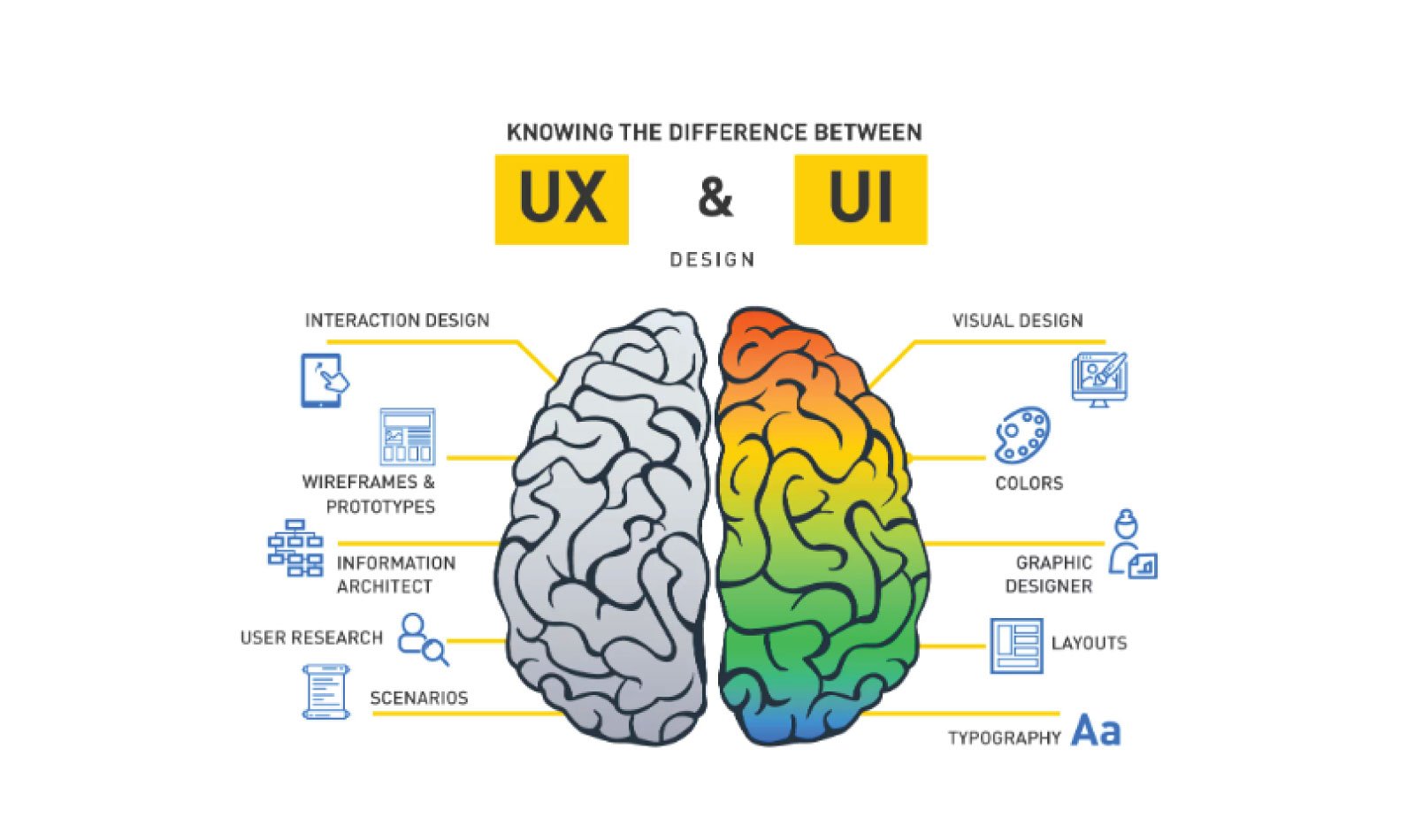
UX design is short for “user experience design,” and refers to the personal experience a user has when using a product. A whole host of different elements can affect this experience, from aesthetics and intuitiveness to customer service and pricing. This means that UX does not only apply to digital products.
UI design, on the other hand, stands for “user interface design,” and refers specifically to the digital methods in which a user interacts with a product. This means the menus and buttons used to navigate a website or control a machine. UI is heavily focused on aesthetics, and good UI will contribute to good UX.
UX vs. UI: Exploring the Concepts
As we just touched on above, UI and UX are fundamentally different things. Of course, they are both geared towards user and customer satisfaction, but so is every element of any consumer product and its development process. Next, we’ll get into the details of UX vs. UI: their definitions, goals, processes, and both good and bad examples of each.
What Is UX?
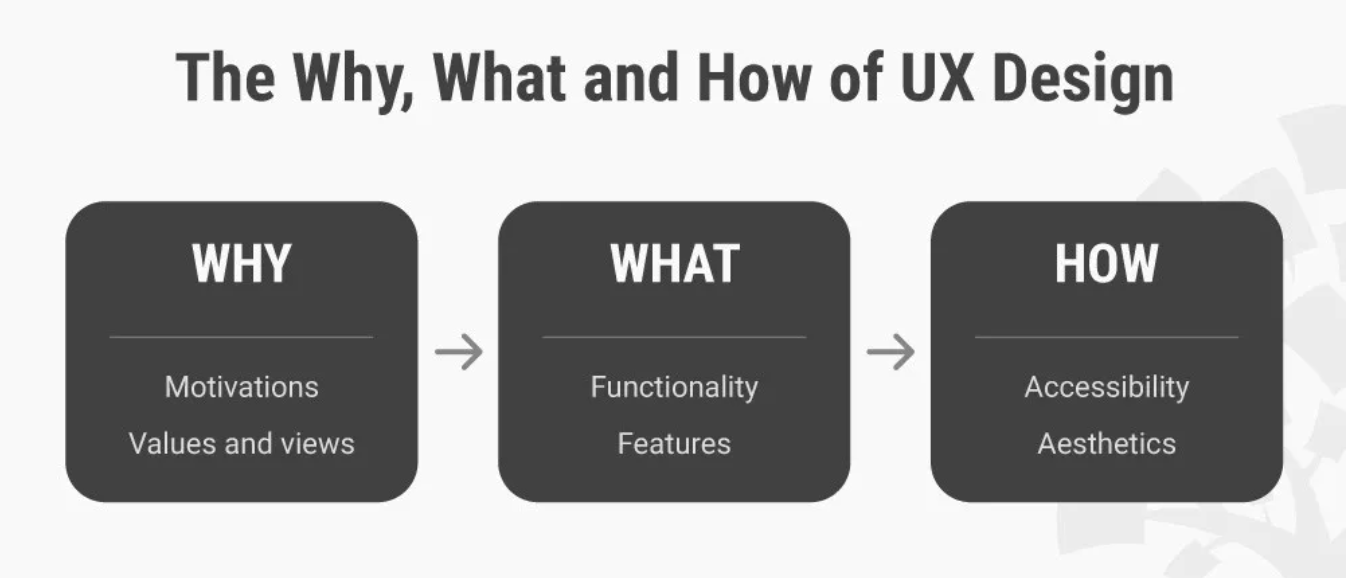
Creating a positive user experience is an integral part of product development. UX Design involves keeping tabs on many different elements of the development process, assessing how they come together, and designing solutions and improvements that will make the user’s experience smoother, more intuitive, and generally more positive.
What Is UI?
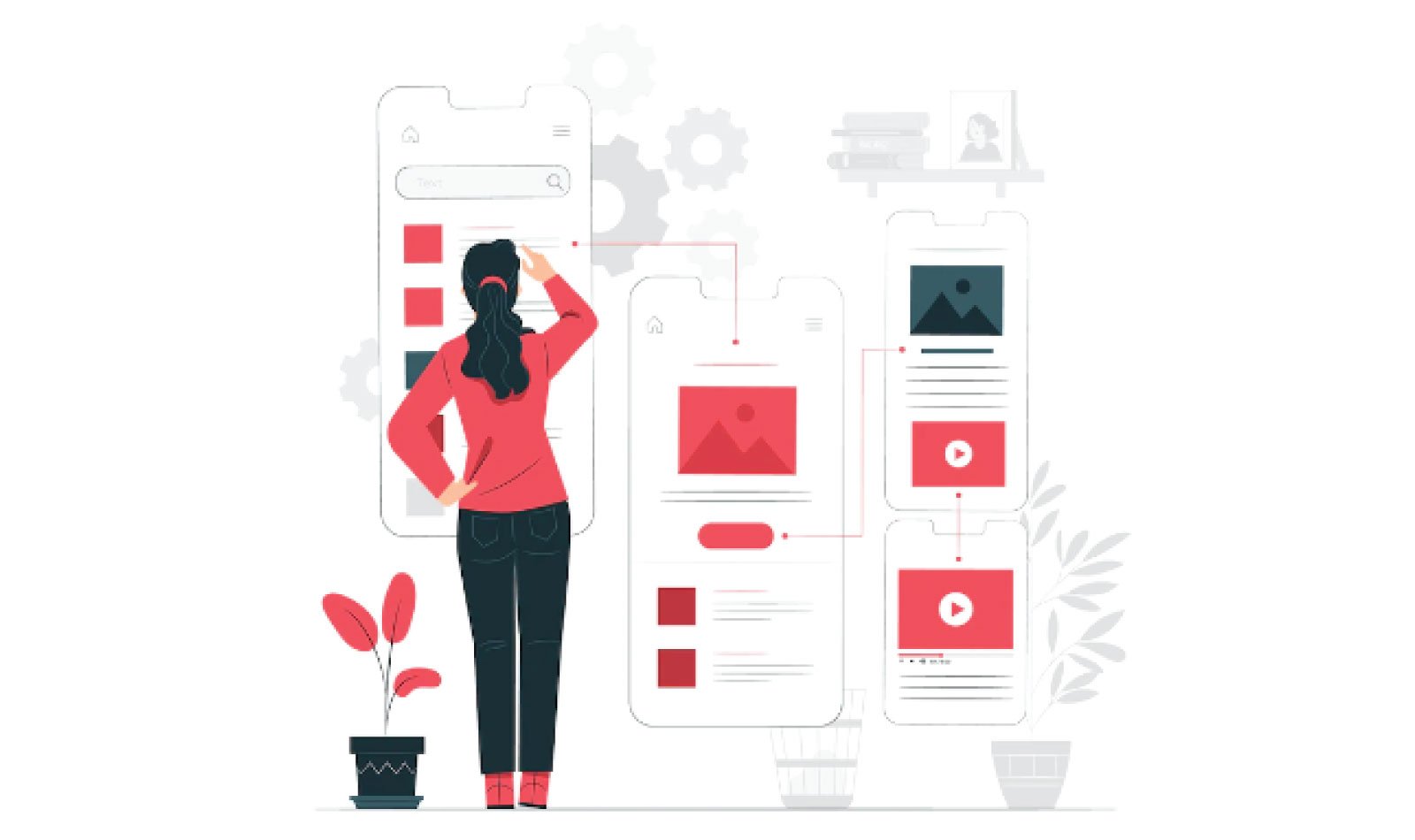
UI Design is a much more specific field of expertise that focuses purely on creating digital interfaces for products and websites. This could include the interface for the product website, the product itself, any accompanying software, and any online customer support.
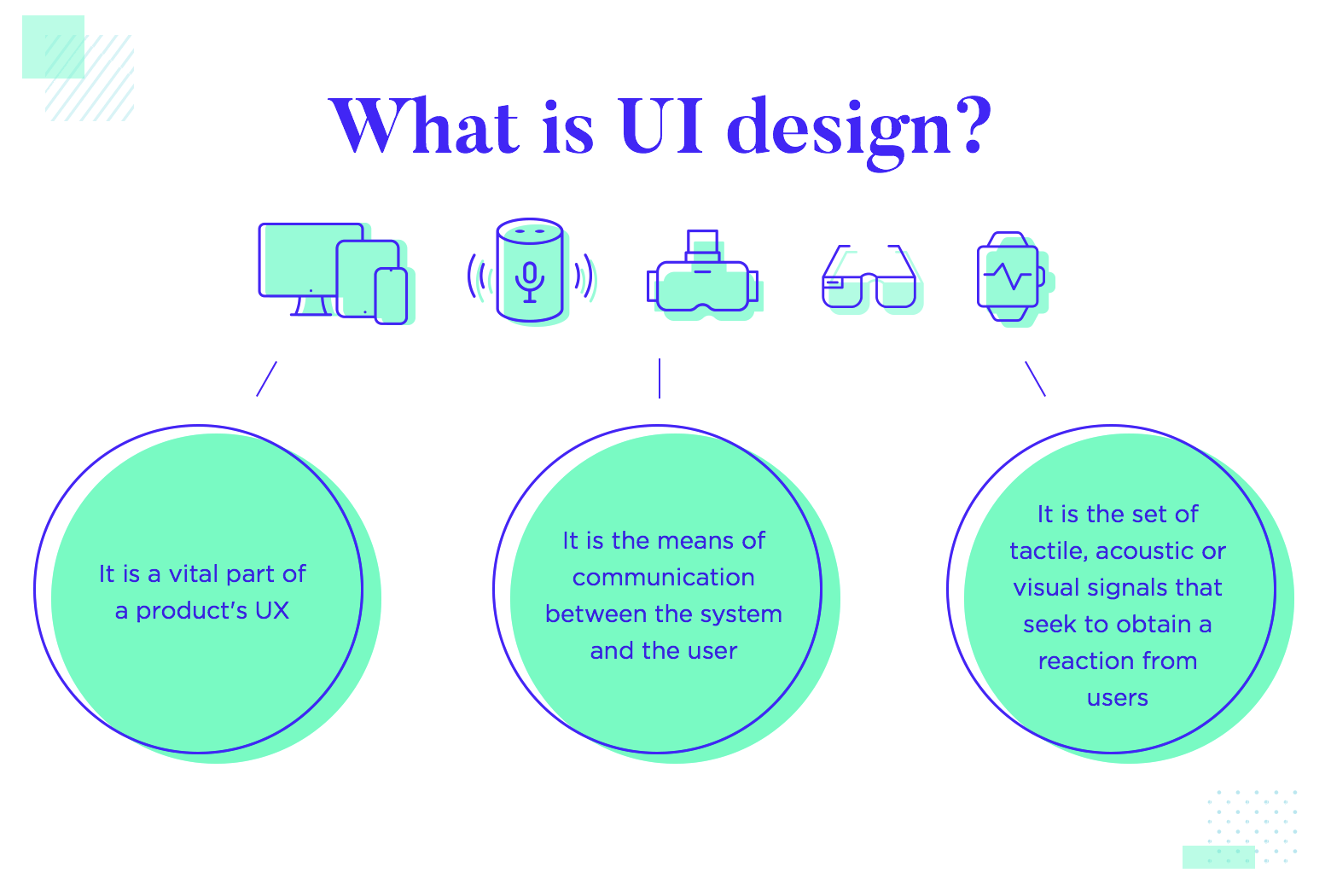
The “interface” of any digital product is the front-facing elements users can interact with in order to use and navigate the product. The two biggest parts of this are menus and buttons. UI design focuses both on the way these look and the way they are structured. For instance, whether the “save” button should be located in the “file” menu or the “view” menu.
UX vs. UI: Goals
While UX and UI share the meta goal of satisfying users, they work towards different aims in order to achieve this.
Goal of UX
The goal of UX Design is to create a process that results in happy, satisfied customers. The typical flow of events for a customer looks as follows:
- Finding the product
- Collecting information about it
- Buying it
- Receiving it
- Learning to use it
- Using it
- Achieving the desired outcome
- And lastly, receiving any support needed along the way
UX aims to give the user everything they need to stay satisfied during each step of this process so that by the end, they can look back and feel they had an overall positive experience with the product and company.
Get To Know Other Design Students
Sinem Ozkaya
UX Designer at Microsoft
Kashif Ross
UX Analyst at Circulo
Janessa Poole
Content Designer at Reforge
Goal of UI
The ultimate goal of UI design is to allow the user to complete their desired task as quickly, easily, intuitively, and pleasantly as possible. This means creating responsive menus that are logically structured so users can find what they are looking for without spending more time and effort than necessary. It also means creating visual elements that are easy on the eyes and effortless to comprehend—buttons that are discernible from other elements, drop-down menus which are clearly indicated, etc.
UI affects a number of steps within the above-mentioned flow of events. A website will most likely be used to find the product, buy it, arrange shipment, receive support, and many electrical products will make use of a screen for navigation and application as well. Many electrical products come with accompanying mobile apps which also rely on UI to allow customers to use the product.
UX vs. UI: Processes
This section will give a brief overview of how the UX and UI for a product are developed.
UX Process

The UX design process begins at the very start of a product’s development. Before prototypes and designs are even put together, the UX team will be a part of meetings held with the stakeholders to discuss exactly what they want this product to give to their customers and what value they want it to bring to the company.
Next, research will be conducted to gather data about the target audience for the product, including its wants, needs, budgets, and expectations. This includes scoping out current industry standards and trends, and is often referred to as competitive analysis.
The third step is when the team will study the customer’s journey from start to finish, and start to pinpoint gaps and room for improvement. A well-used technique is creating a set of user personas and profiles with different needs and assessing how well the current process will work for each customer.
Once everyone has a clear picture of what they want to achieve, prototypes will be made and work will start on designing aspects like UI and IA (information architecture). During this phase, the UX team will collaborate with everyone involved to make sure the desired user experience comes into effect.
Finally, the process will end with rigorous testing of the product and addressing any issues.
UI Process
The first things the UI team will need to determine are the goals and success criteria for their interface: what does it need to achieve? What problems is it solving?
The research will then take place to scope out similar competitor products and analyze the methods used by these products. The pros and cons of these can be used for reference later in the design process.
Next, the UI team will work closely with the UX team to finalize what and how many screens the UI team will be creating UI for, and what the precise goals are for each. After this, sketches, wireframes, and design systems will be created to decide on a consistent aesthetic style and logical structure.
Lastly, high-fidelity prototypes will be made that bring all of this together. These prototypes will look fairly similar to the final product and will keep getting closer and closer as usability testing leads to new iterations. Eventually, the last iteration will become the final product.
UX vs. UI: Examples
Here are a few screenshots highlighting examples of good UI design vs. UX design.
Examples of Good UX
- Good UX makes sure the user gets what they want as soon as possible. Springboard offers courses to help users achieve their dream jobs. As soon as the website loads, users are greeted with the opportunity to instantly personalize their experience and start viewing content specific to them by picking the career field they are interested in. It even includes a link to help out anyone who hasn’t chosen a specific field yet.
- YouTube’s UI is an example of a good UX-orientated UI. It prioritizes what the users want to see, which is video thumbnails. By choosing a heavily icon-based UI, YouTube is able to maximize the space dedicated to showing video content and avoid bothering the user with clunky menus.
- It is also important to make sure many kinds of people can achieve a good user experience with the product. Here, Wikipedia shows how aware it is of its global audience, by making its homepage and content accessible to users of many different native languages.
Examples of Good UI
- Good UI is intuitive and communicates information to the user without the user having to put in any effort to understand. This main menu from Springboard uses arrows to indicate the existence of sub-menus, letting the user know that clicking this button will display more options. This also allows the user to know that clicking the option without an arrow will move them directly to a new page.

- Netflix is a video streaming service with a very large selection of content. Users are known to spend many minutes scrolling down through the content in search of their next TV show, so Netflix includes a frozen top menu that stays on the screen no matter how far the user scrolls. This allows them to instantly return to the top of the page and access the main menu, search function, or their profile at all times.

- Amazon’s UI needs to display a lot of different information so its users can shop easily and efficiently, and it also makes use of a frozen menu to achieve this. Important elements like the shopping basket, delivery information, user accounts, and region are consistently displayed so users know that they are viewing products that are relevant and purchasable.

UX vs. UI: Exploring the Roles
Now that we’ve covered the concepts, let’s take a closer look at the roles themselves.
What Does a UX Designer Do?
A UX designer plays an integral part in the development process from start to finish. They are part of the initial high-level concept meetings with stakeholders, and they conduct rigorous research to determine what the target audience will want from the product. The UX team works closely with all other members of the larger product team to make sure their work aligns with the user experience goals the UX team has set out. What a UX designer does can vary greatly depending on the company they work for, so it can be a very varied and evolving role.
What Does a UI Designer Do?
A UI designer is part of the team that designs the user interface for a product. The size of a UI design team can vary greatly depending on the type of product being made and how many digital interactions will be necessary to buy and use the product.
Assessing goals, creating design systems, sticking to a consistent visual design, and making prototypes are all part of a UI designer’s work.
UX vs. UI: Job Responsibilities
Here is a list of job responsibilities you might find in UX vs. UI job advertisements.
UX Job Responsibilities
- Conducting user research and analysis on competitors
- Creating user profiles and storyboards
- Creating prototypes and wireframes
- Conducting rigorous testing both in-house and with focus groups
- Collaborate on UI and IA design
UI Job Responsibilities
- Planning new UI designs and optimizing existing ones
- Conducting ongoing research into industry standards and trends
- Designing interface elements with the brand universe in mind
- Creating sketches, wireframes, and high-fidelity prototypes
- Testing and then and incorporating improvements
UX vs. UI: Job Requirements
Here are some of the main skills employers will look for in a UX vs. UI designer.
UX Job Requirements
- Familiarity with industry tools like Adobe InDesign, Illustrator, InVision, Sketch, and Zeplin
- Excellent collaborative and communicative skills
- Understanding of fundamental design principles
- Good problem-solving and organizational skills
- Business management skills
- Relevant education or experience within the industry
UI Job Requirements
- Proven UI design experience (through education, industry experience, and portfolios)
- Proficiency in OmniGraffle, Photoshop, Illustrator, and similar programs
- Proficiency in JavaScript, HTML, and CSS
- Good collaboration skills
- Good presentation skills to sell and explain design choices
- Good knowledge of industry trends and standards
UX vs. UI: Skills Needed
Next, take a look at our quick list of the main skills you’ll need to learn to enter these fields!
UX Skills
- Familiarity with tools used by the product development teams such as Adobe InDesign, Illustrator, InVision, and Zeplin
- Collaborative, communicative, problem solving, and organizational skills
UI Skills
- Proficiency in visual design tools like Photoshop, OmniGraffle, and Illustrator
- Familiarity with front-end coding languages such as JavaScript, HTML, and CSS for making prototypes
- Research skills
- Problem-solving skills
UX vs. UI: Salary
Salaries for UX vs. UI roles are not hugely different, but UI salaries are usually a little higher. UI designers need in-depth knowledge of the software UX designers only need to be familiar with, and they also need to be familiar with front-end coding languages which is currently a very in-demand skill.
UX Salary
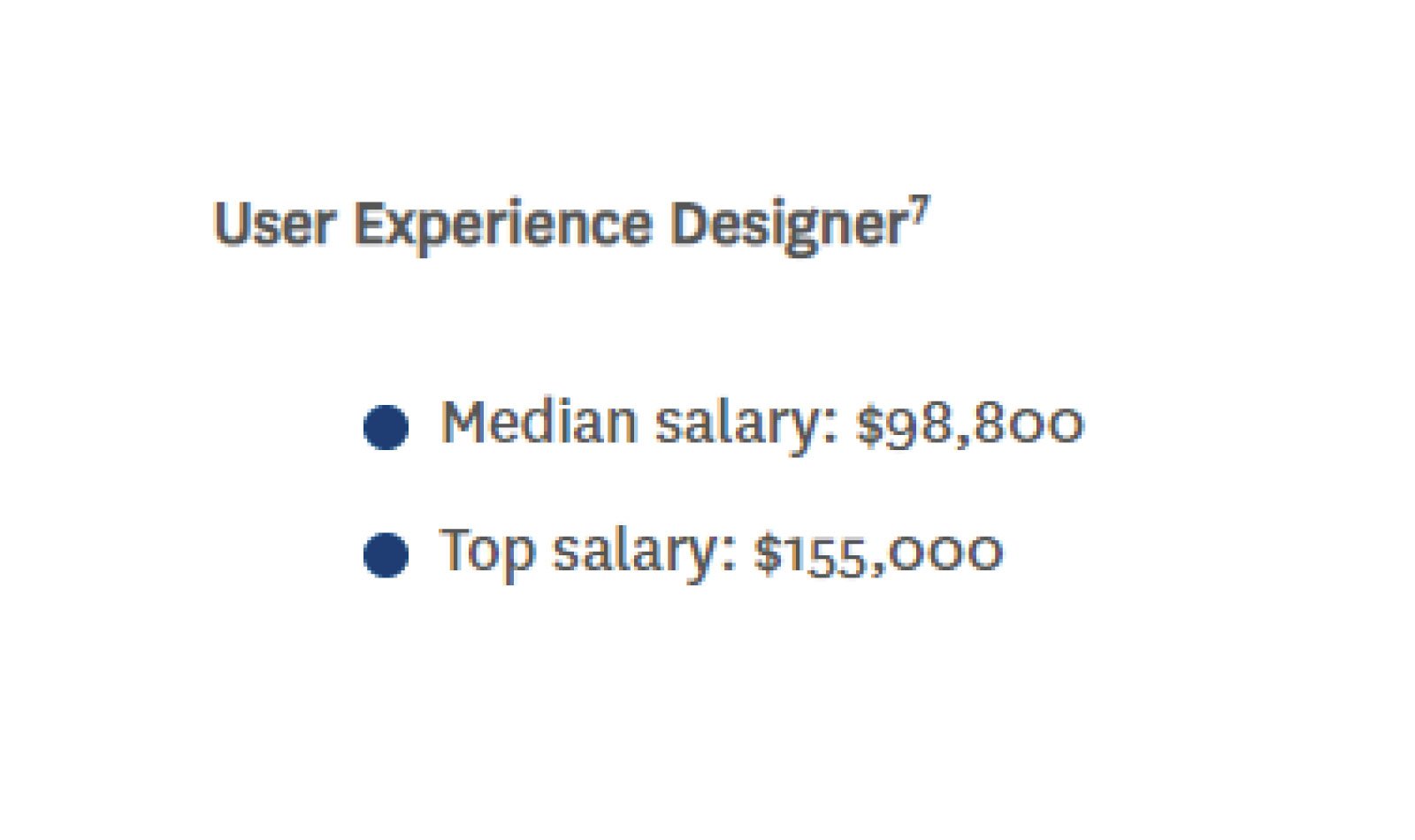
Median salary: $98,800
Top salary: $155,000
Here is a more detailed UX designer salary guide if you’d like to see more statistics and comparisons of UX salaries.
UI Salary

Median salary: $104,800
Top salary: $167,500
Salaries vary greatly depending on where you are and how much experience you have. Here is a more in-depth look at UI salaries and what you can expect to make.
UX vs. UI: Tools
Here are lists of popular UX vs. UI tools that you’ll often see used in the industry. Look out for these pieces of software in the course descriptions of online bootcamps for UX and UI design, because knowing how to use prototyping tools and other industry tools is imperative for any UX or UI designer.
Popular UX Tools
- Adobe Photoshop (graphic design software)
- Sketch (design tool, macOS)
- Adobe Illustrator (vector graphics design software)
- InVision (tool for creating interactive prototypes)
- UXPin (wireframing tool)
- Figma (graphic design, wireframing tool)
- Justinmind (prototyping tool)
- Balsamiq (wireframing tool)
- Adobe XD (vector graphics tool)
- Proto.io (prototyping tool)
Popular UI Tools
- Marvel (UI design tool)
- Zeplin (design publishing tool)
- Origami Studio (prototyping tool)
- Uizard (UI design platform)
- Flinto (prototyping tool, macOS)
- Adobe XD (vector graphics tool)
- Figma (graphic design, wireframing tool)]
- Adobe Photoshop (graphic design software)
Getting Started as a UX or UI Designer
The tech design industry is fairly known for skills-based hiring. Many high-ranking tech professionals believe making degrees a requirement results in a lot of missed opportunities for companies. Plenty of big-name tech companies like Apple, IBM, and Google have recently even announced the elimination of degrees as a hiring requirement.
This ongoing change in hiring requirements makes now a great time to get into UX and UI design while learning at your own pace, in your own way.
How To Become a UX Designer
1. Learn the fundamentals
An aspiring User Experience designer needs to study the following skills and fields of knowledge:
- Design thinking
- User research
- Synthesis and presentation
- Ideating and designing
- Sketching, wireframing, and UI
- Prototyping and presenting
- Design Sprint
This can be done in three main ways—through self-study, university programs, or online courses and bootcamps. Bootcamps and courses are becoming increasingly popular due to their useful middle-ground in terms of pricing, accessibility, and structured learning.
2. Make a portfolio
A UX design portfolio needs to showcase what you can bring to a project, such as your design know-how, organizational skills, your familiarity with the various areas of product development, and your other strengths.
3. Apply for entry-level UX designer roles.
How To Become a UI Designer
1. Learn key design principles
For UI designers, the following subjects and skills (and any relevant software) should be studied:
- Design thinking
- Conducting and synthesizing user research
- Ideating and Designing
- UI, heuristics, and interaction design
- UI practice exercises
- Sketching and wireframing
- Style guides, elements, prototyping
As with UX design, study methods can be chosen according to your strengths and preferences. College courses, self-study, and online options are all available.
2. Create a portfolio
During and after your learning journey, create a UI portfolio of projects that showcase what you can do, what you’re interested in, and where your specific skills lie.
3. Apply to level-appropriate UI design jobs, and start preparing for your UI interview.
Related Read: 11 UI Design Certification Programs To Get You Hired
Can UX and UI Work Together?
Yes! UX and UI are closely intertwined—as we mentioned in the introduction, they are often even used interchangeably. It is also common to see roles that encompass both fields under the name of UX designer or UX/UI designer. This is especially common for fully digital products, as the user’s entire experience is conducted almost solely through digital interfaces.
In accordance with this, you’ll also find UX/UI bootcamps that prepare you for roles in UX or UI design, or roles with elements of both.
Since you’re here
If you want to work in design, you can. It’s that simple. With our UX Design Course, you’ll launch your career in design in 9 months or less – guaranteed. Browse our free UX salary guide to see what you could be making





![8 Best UX Design Courses for Beginners [2022 Guide]](https://www.springboard.com/blog/wp-content/uploads/2022/08/ux-design-best-courses-380x235.png)